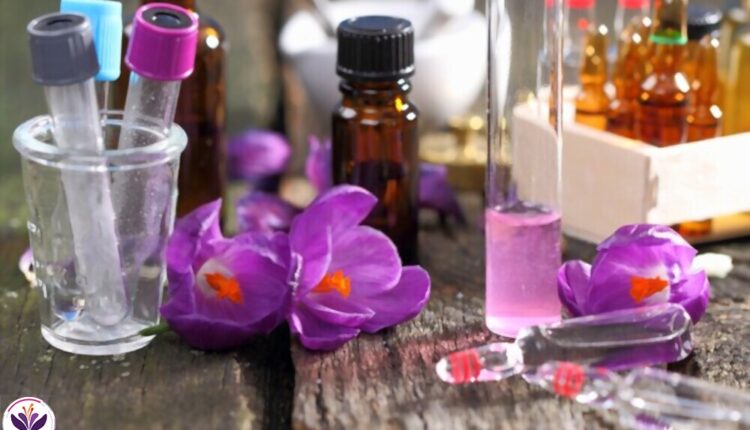How can you tell if saffron is real? | DIY quality test
Unless you live in Iran, India, Spain, or Greece, you need to buy saffron from importers. Whether you purchase this delicate spice online or from your local middle Easter grocer, you will be amazed by the many brands selling saffron out there. Also, having heard of the many benefits and unique taste of saffron would be so disappointing if you try fake saffron on your first try.
But don’t worry. Here we’ll teach you how to do the saffron quality test at home. However, people who used saffron before can distinguish fake saffron from real ones by tasting it. But for others, it can be hard to distinguish this heavenly spice just by tasting or smelling it. So, keep reading to find everything you need to know about how real saffron differs from fake ones.
DIY saffron quality test
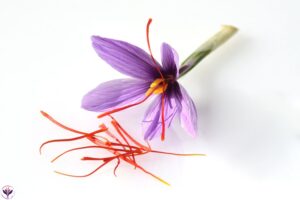
Identifying pure saffron is not complicated; there is more than one method to do so. As you know, saffron is the most expensive spice in the world. If you want to get the most out of the price you pay, you should stick to the best quality saffron you find.
Although these tests are easy, they take time as you may need to try different brands to find the best one. So, let’s dive in without further ado.
1. Cold water method
- Take a clear glass filled half with cold water.
- Add a couple of saffron strands to it.
- Let them sit for at least five minutes.
What will happen next? Well, both fake and real saffron will impart a hue. However:
- Real saffron will impart a yellowish hue, while fake saffron may release a red hue.
- Pure saffron will release its color gradually within 10-15 minutes; while with fake saffron, the process happens immediately.
- After 15 minutes, real saffron will impart all its golden hue while the threads keep their original red color. Fake saffron threads will lose their color entirely or partially and turn white.
If you saw any of the above signs and noticed your saffron is fake, throw it away. Fake saffron contains chemicals that may be harmful to your body. But if your saffron is pure, you can use the water to make food or drinks.
Rub saffron strands between fingers
Another saffron quality test you can do after this is to take saffron threads from water. Then place them between your fingers and rub them back and forth. Fake saffron will break apart or turn into powder after rubbing, while real saffron will keep its texture.
2. Baking soda method
Just like method one, add baking soda and saffron strands to clear a glass of water. Then wait for saffron to impart hue, which will take less than 10 minutes. If it were golden-yellow, you’d know it’s pure. If it imparts a reddish-yellow hue, you’d better throw those fake threads away.
3. Float method
Another method is, again, to put saffron in water. Pure or real saffron will float on water, while fake ones will quickly submerge. Sometimes only part of the saffron will drown, indicating that it’s not good quality saffron and has something mixed up in it.
Fake saffron submerges because of added color or other ingredients. However, pure saffron is as light as air and would float if put in water. Saffron quality low.
4. Price method
As surprising as it seems, the price can reveal purity! Real saffron is expensive. There’s no way you can find pure saffron that’s cheap! Planting and harvesting saffron takes a lot of effort and labor. Sometimes a whole village needs to work day and night to pluck saffron flowers. And it all is done by hand!
So, if you want to enjoy this delicious spice, you need to pay the price. Of course, if you travel to lands of saffron, such as Iran and India, you’ll find pure saffron at lower prices. Because the cost of exporting and shipping will be cut, be ready to pay at least a hundred bucks for every 10 grams of pure, quality saffron.
Also, I invite you to see the video as well.
How can I do a saffron quality test before purchasing one?
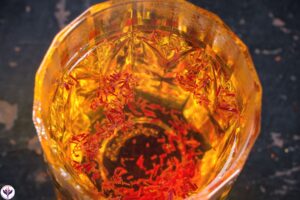
how to check if saffron is genuine
Well, there are some other methods you can use before purchasing saffron to see whether it’s pure or not. But these methods need experience. It’s like when you want to buy a watermelon. The experienced ones know which watermelon is red and sweat inside and which is not because they have seen the shape and color and even heard the sound of a sweet one that they can recognize from 100 yards.
But don’t worry; here we’ll give you some clues:
- Sight: quality saffron have a shape of delicate threads. It has a vivid red color while its tips are lighter and may seem a bit orange-red color. On the other hand, fake saffron is usually dark red or has dark orange strands mixed in.
- Scent: saffron has a strong aroma. It smells fresh and sweet. It’s like you have mixed hay and honey and made pure perfume out of them. It may sound corny, but you’ll know the scent when you feel it.
- Taste: always taste it to test it! Ask the vendor for a few strands of saffron, then place them on your tongue. Play with it in your mouth until you sense the taste. If it tastes sweet, you are sucking on fake saffron. Pure saffron taste a bit bitter and light. After tasting, place the wet threads in tissue and rub them. If the tissue turns yellow, you know its quality saffron; red or other colors just show fake threads.
Check out our article on the Saffron Uses For Fairness Skin
How fake is saffron made?
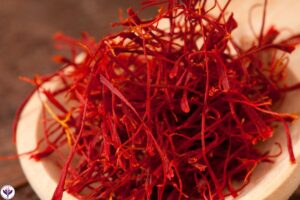
Saffron is an expensive spice, and obviously, adulterating it will make a lot of money. As a result, many people that see money in this industry will be tempted to make more by creating fake saffron. They may even add other substances to real saffron to make it weigh more. Although now that you learned various saffron quality tests, you won’t fall for it. Anyways, let’s see how adulterating saffron is done.
Adding water
You may find moist saffron on the market. Usually, in this case, the seller will claim that their saffron is fresh, and that’s why it’s moist. Don’t fall for that. Saffron should be dry, whether fresh or not. You can only identify its freshness by its unique and elegant scent. Spraying water on saffron will only increase its weight and bring more money for sellers.
Adding powders
We always insist on not purchasing powdered saffron because sellers can easily add other powders to it. For example, they may add rice flour, sawdust, corn starch, and so on to powdered saffron to add weight. Or, even don’t bother to do so and sell pure flour and starch colored in red!
Coloring corn silk
Spraying food coloring on corn silk is one of the most common methods of adulterating saffron. There is no need to mention how harmful consuming such ingredients would be. So, now you understand how necessary saffron quality tests are when purchasing this precious spice.
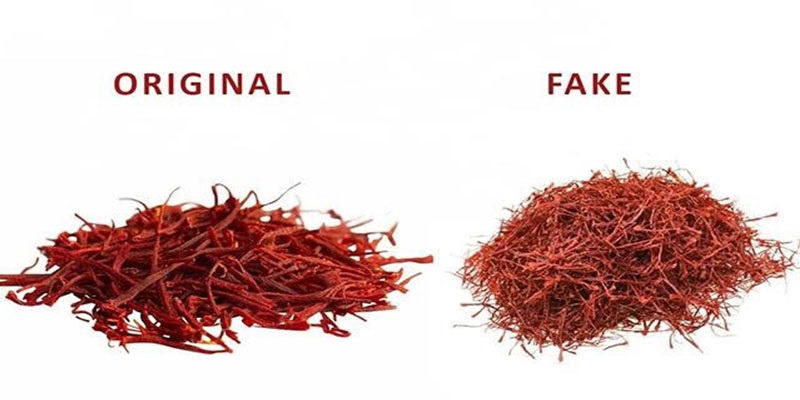
Fake saffron
The authenticity of saffron is one of our constant concerns, especially for women when buying saffron for cooking and steeping. Are we really buying genuine saffron or not? Because the adulteration of this plant with oil, honey, and other substances is the most professional method of fraud in saffron sales.
One way of fraud is to mix the stigmas of saffron with some type of oil, sugar, salt, or honey in a way that adds to its weight. Usually, these fraudsters are professionals and cheat in a specialized way. Therefore, it’s not possible to ensure whether it’s pure or impure. They try for months to gain more profit by mixing saffron with other substances.
Fraudsters usually spray or sprinkle these substances as a solution onto the saffron stigmas, and when they dry, it increases the weight of saffron, which is not easily detectable.
Does real saffron float or sink?
Real saffron threads usually sink when placed in water. This is because the threads are dense and heavy and contain a high concentration of compounds such as crocin and picrocrocin. However, some low-quality saffron may be mixed with other materials to make it float in water. Therefore, floating or sinking alone cannot be a reliable indicator of the authenticity or quality of saffron.
Check out our article on the Does Saffron Lighten Skin ?
Credit:


